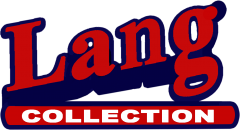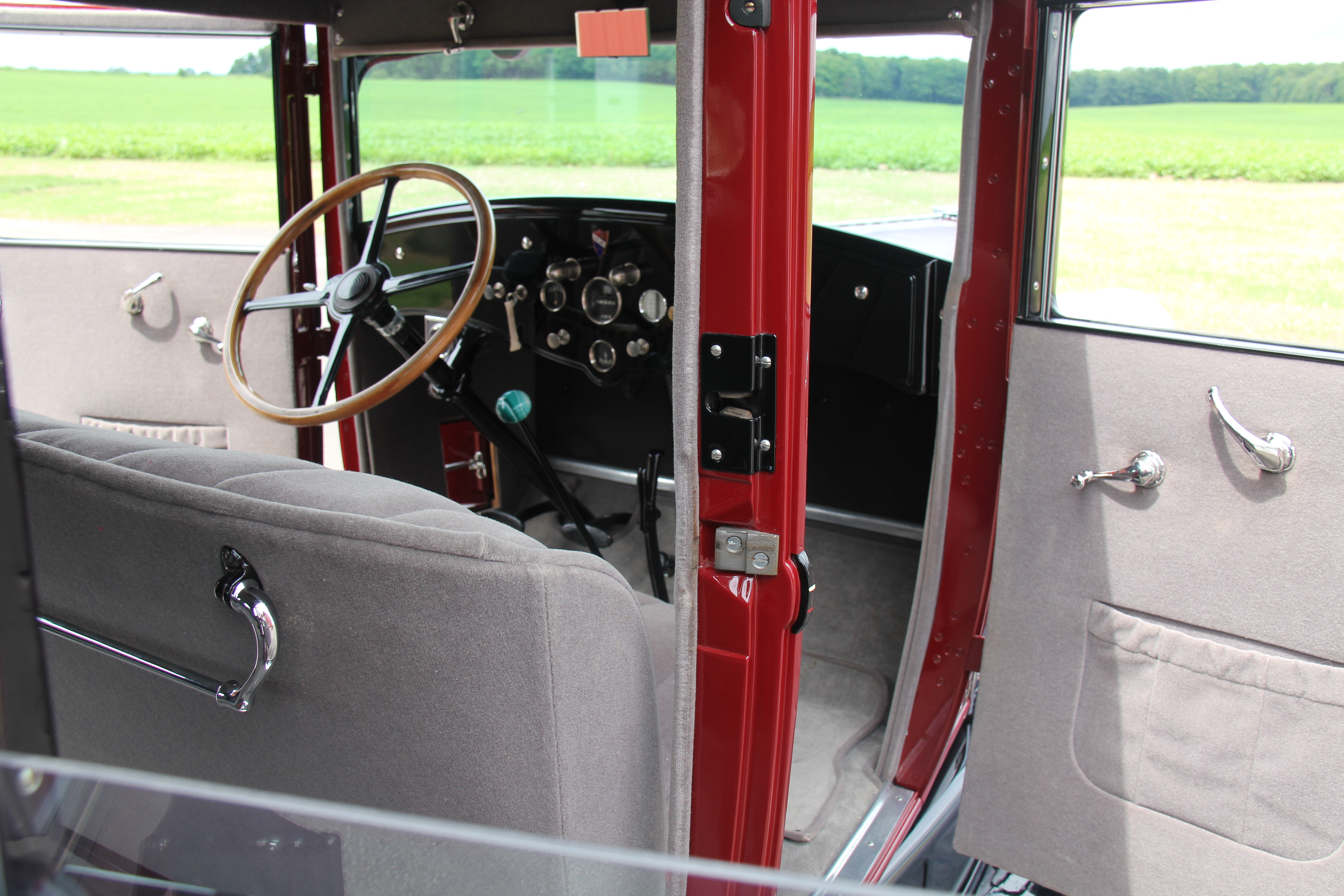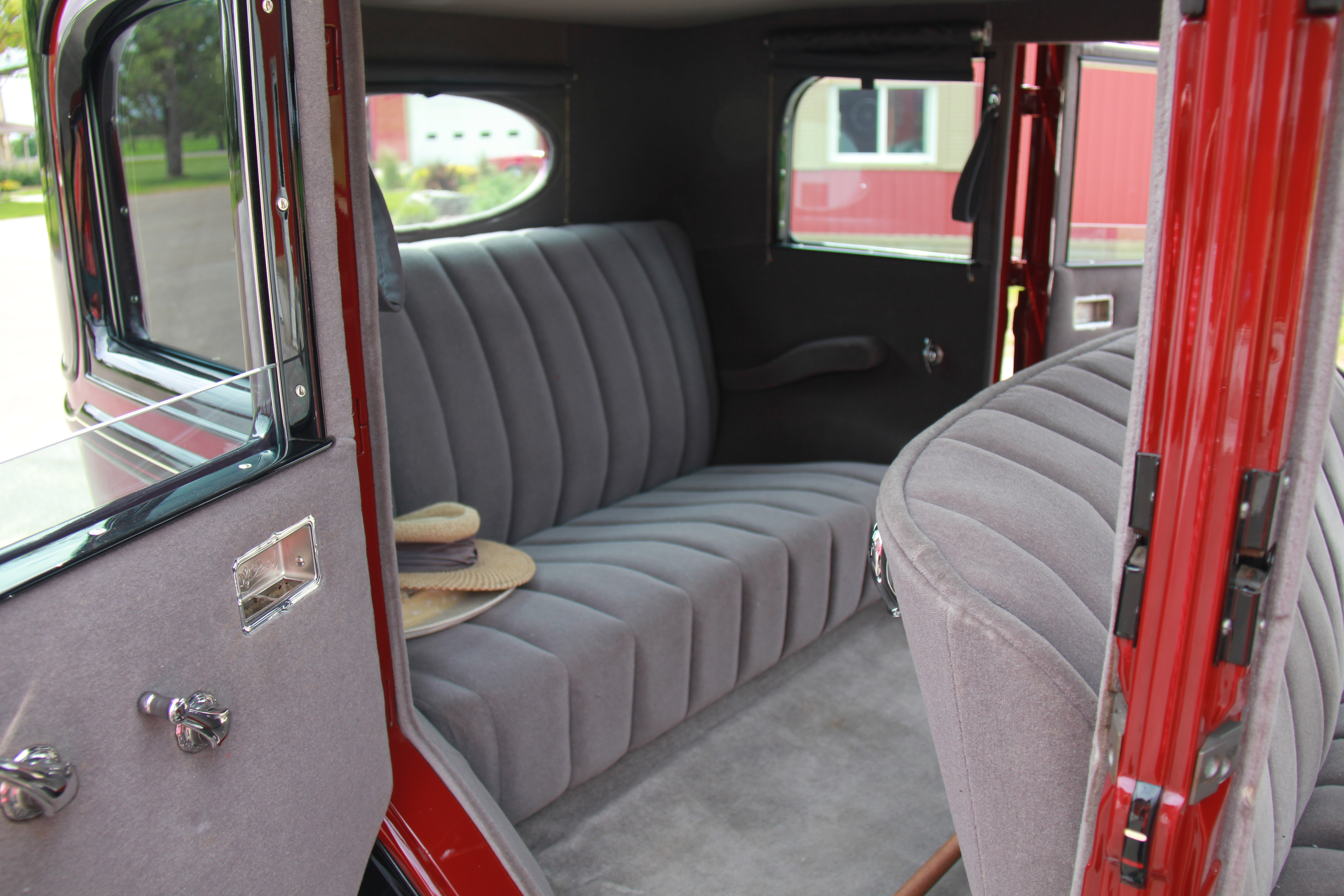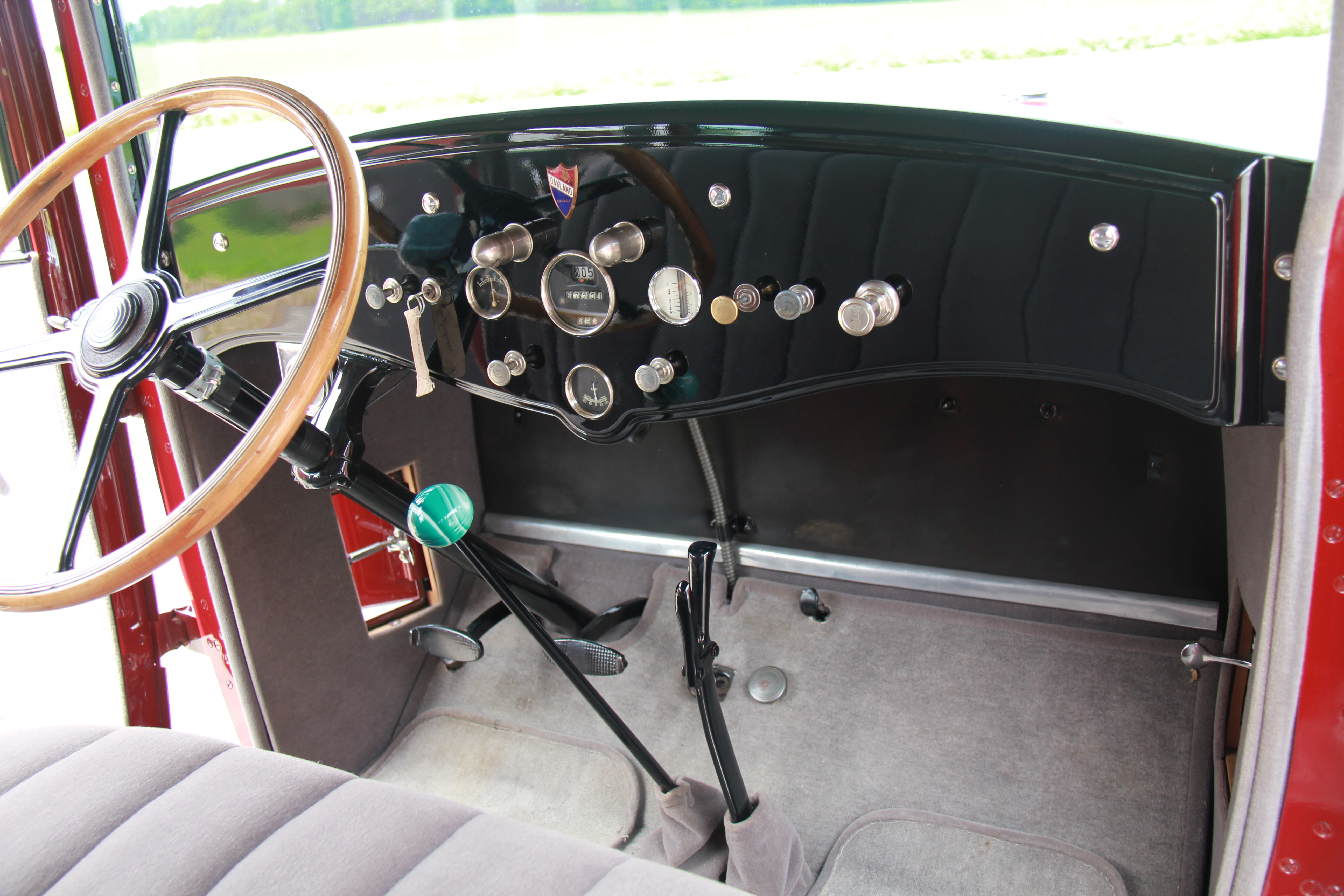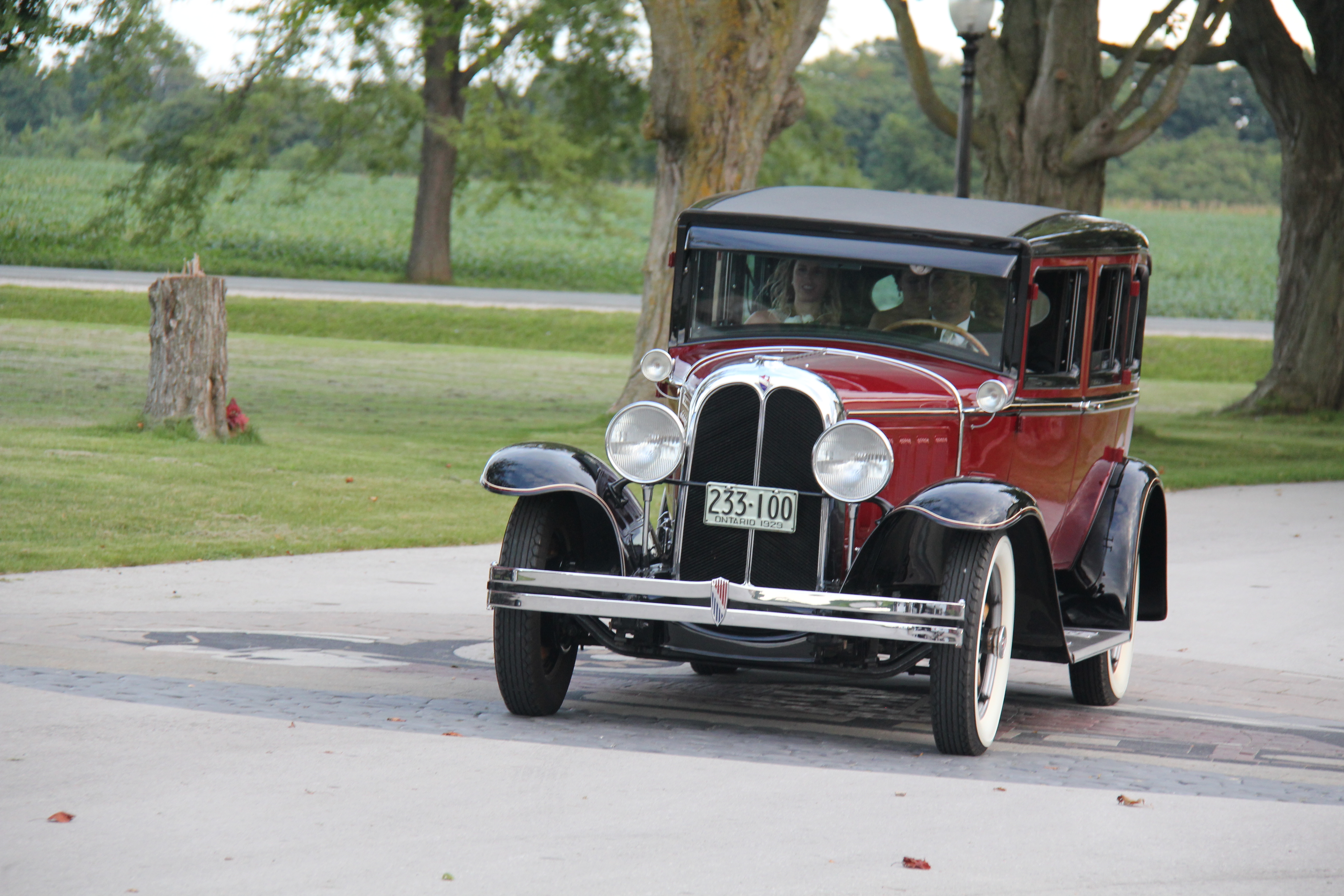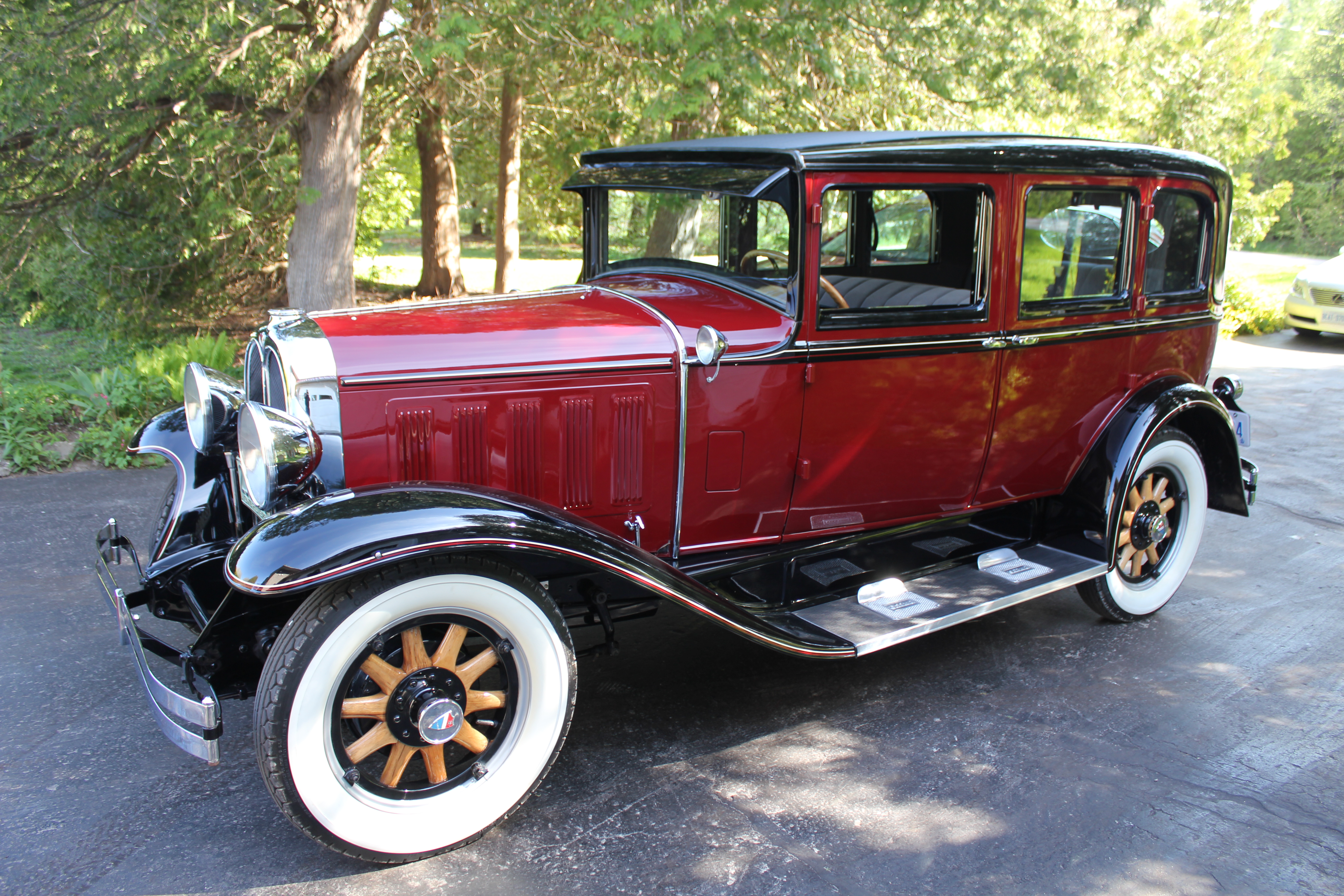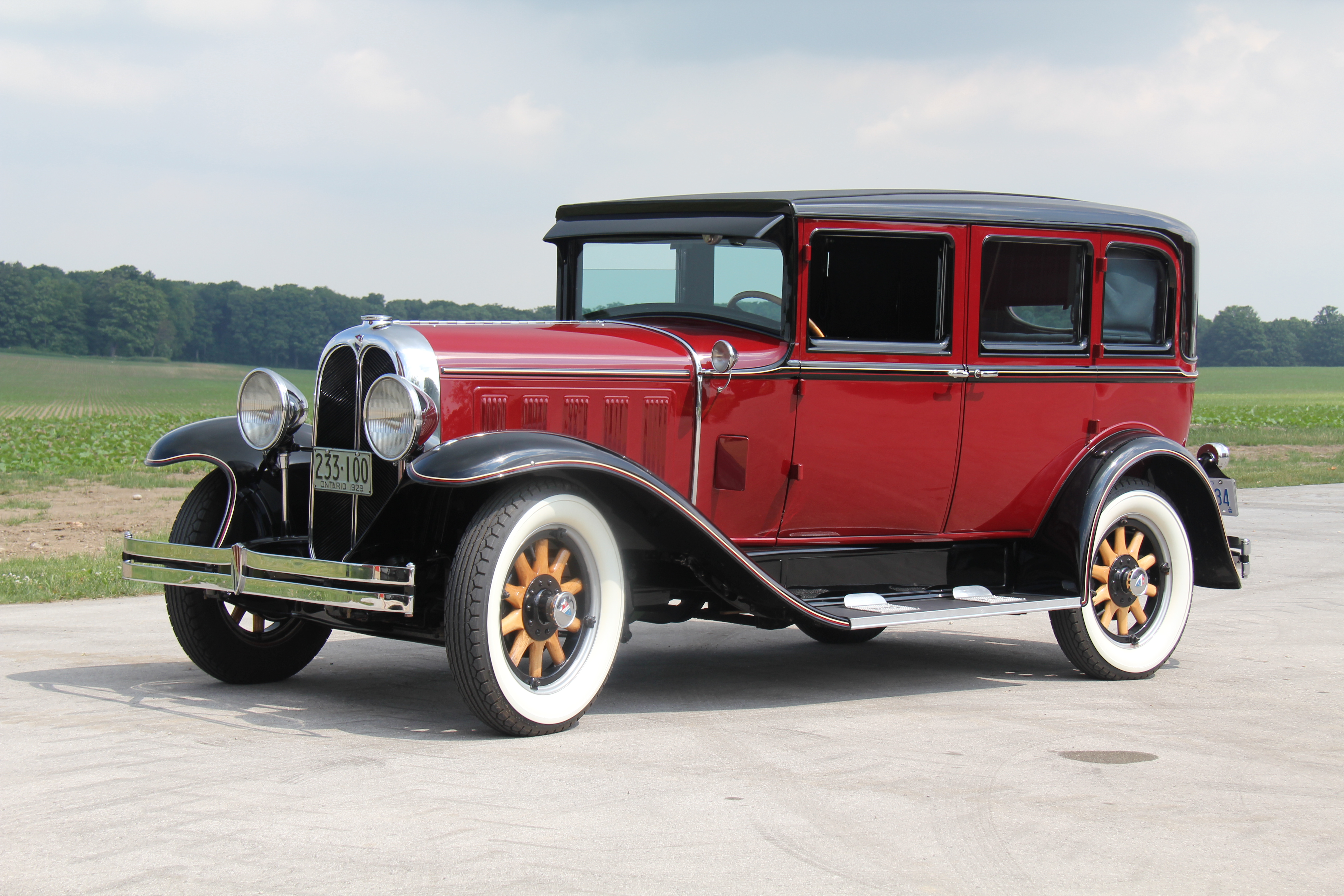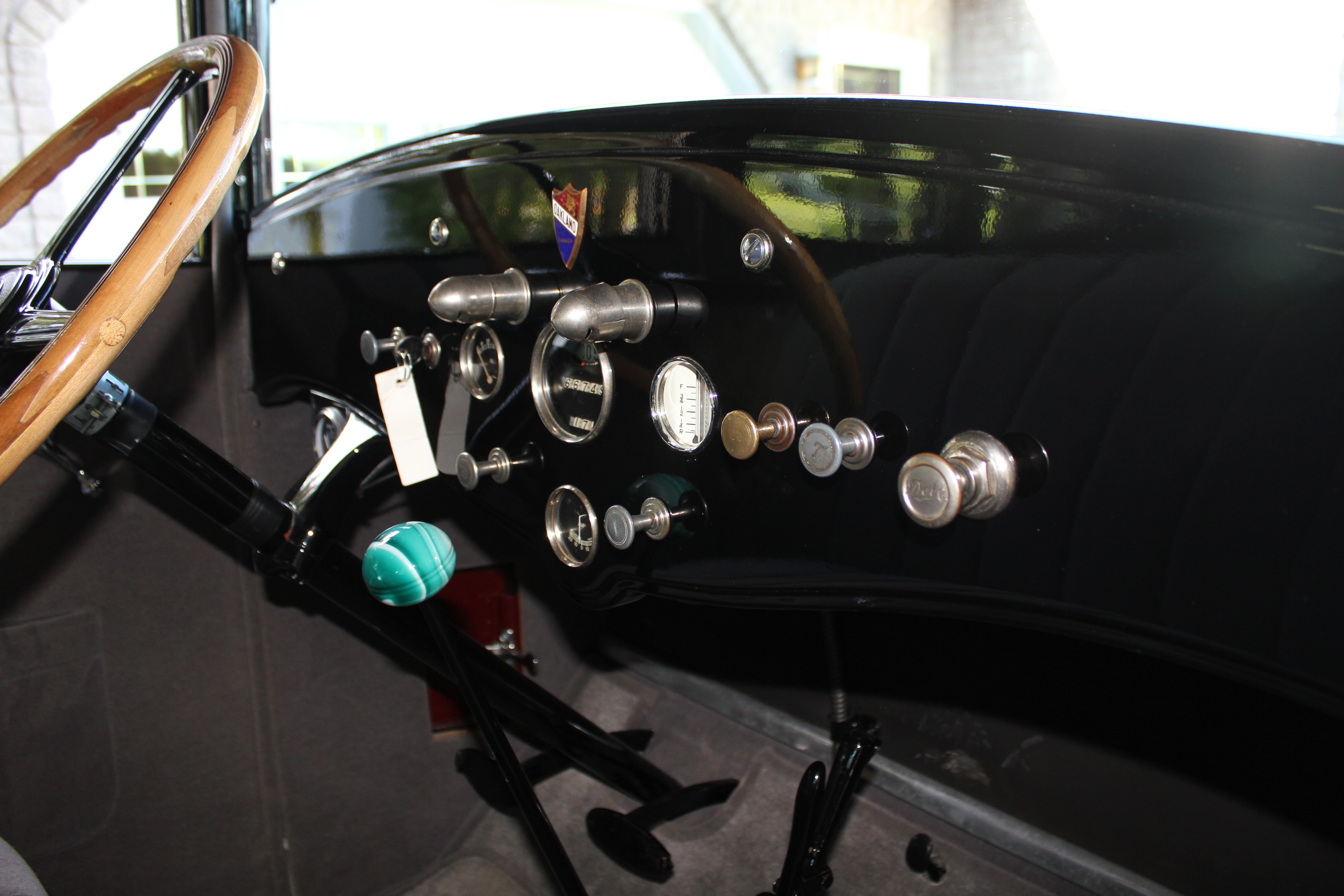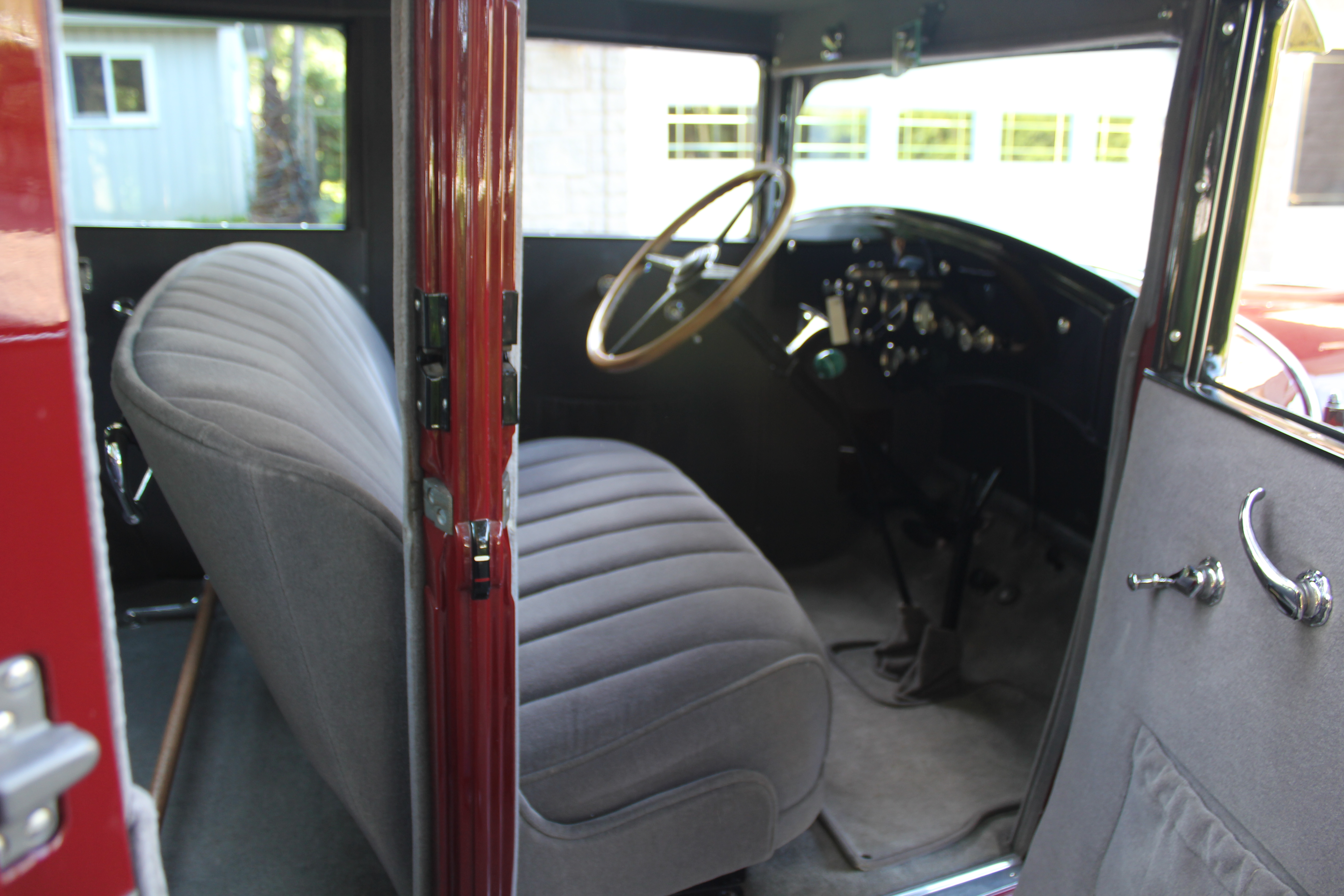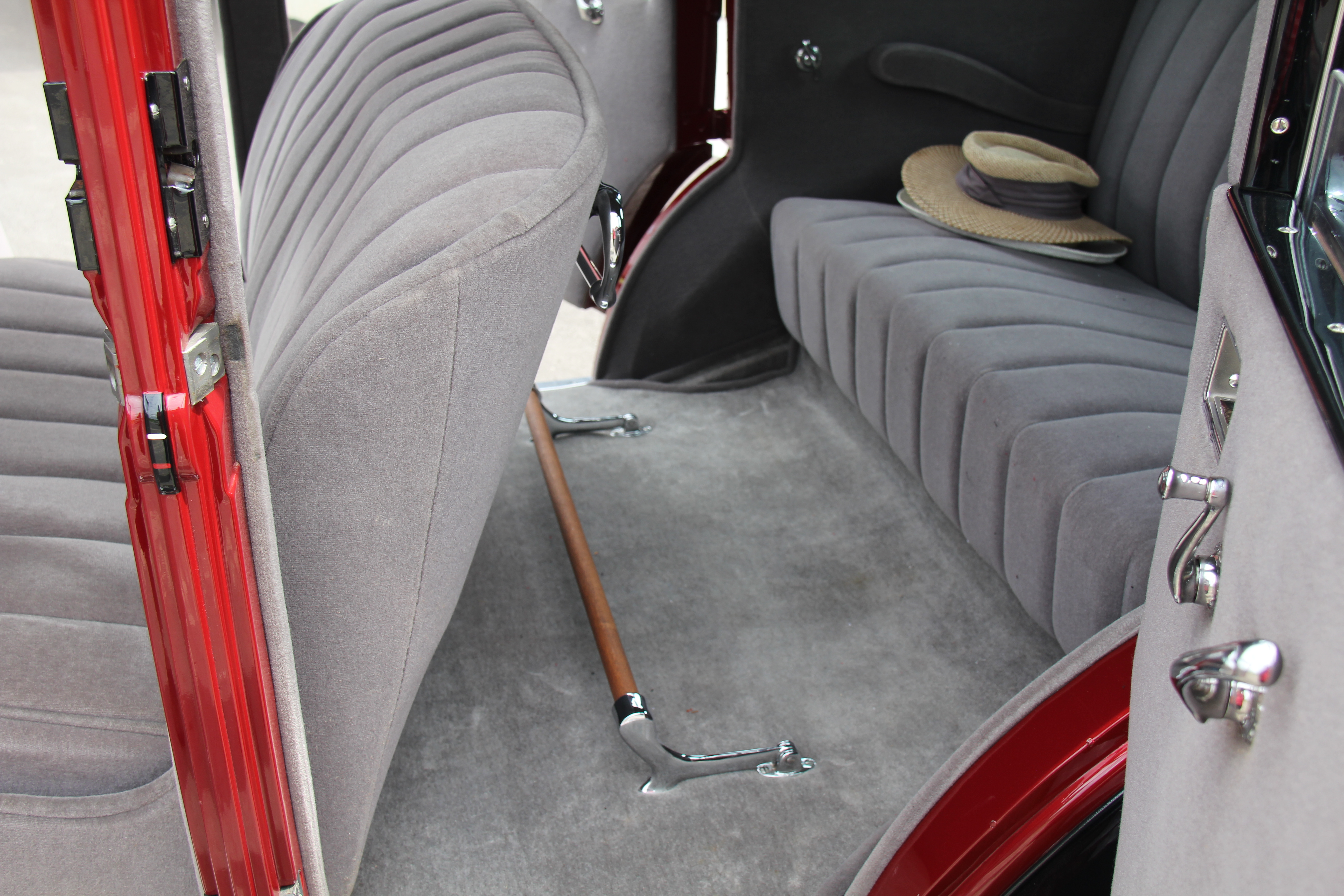1929 OAKLAND ALL AMERICAN SIX NO. 7
This is a Canadian Made Vehicle
Flat Head straight 6 cylinder Rated: 212 cu in 27.3 HP
3 speed standard transmission Weight: 3210 lbs. WB: 117 in
All 1929 Oakland’s featured a chrome divider bar that vertically split their radiators visually.
Oakland cars were produced from 1909 to 1930 It was an upscale part of Pontiac but by 1930 there was so little difference between the name plates and because of scales forced on it by the great depression, GM decided to discontinue the Oakland. The last Oakland was built in 1931. But more than one million Oakland’s had been produced by that time.
The 1929 Oakland All-American Six sedan was a moderately priced, mass-produced luxury car. Its fine body work, luxury accessories, and styling accents distinguished it from lower-priced sedans. These features reflected middle-class motorists' desire for greater sophistication and General Motors' focus on the sales appeal of artistically designed, comfortable, closed-body cars.
This Oakland All-American Six four-door sedan has a steel body by Fisher with wood-and-fabric top. It has a six-cylinder engine with an electric self-starter and crafted wooden-spoke wheels.
GENERAL MOTORS
When the second company started by Henry Ford went bankrupt in 1902, the creditors brought in an auditor named Henry Leland to appraise the equipment for liquidation. Leland saw they had everything in place to make automobiles so he talked the creditors into making a new car with Leland himself in charge which he named “Cadillac” after the founder of Detroit. Thus was born the “Standard of the World” and the precursor to General Motors.
Meanwhile, William C. Durant, a carriage maker from Flint MI, was a world class salesman and marketing genius. Though not an engineer he recognized engineering talent when he saw it. But his clearest vision was how to put the world on wheels. In 1908 he installed Walter P. Chrysler as manager of the ailing Buick Motor Car Company and then used the rapidly expanding and now highly profitable Buick as a base to build General Motors as a holding company to acquire more companies. Among his partners were Charles Stewart Mott of Flint MI and Sam McLaughlin of McLaughlin Carriage Co of Oshawa Ont (who developed McLaughlin-Buick of Canada). In 1909 Durant and partners brought into the fold Cadillac, Elmore, Oldsmobile, and Oakland (Pontiac). He also acquired Reliance Truck Company of Owosso MI and Rapid Motor Vehicle of Pontiac MI which he reorganized into GMC Truck and Coach. Durant “bought” companies by exchanging G.M. stock for their company’s stock. This led to being highly leveraged and in 1910 during a periodic collapse of the new car market Durant lost control of GM to a bankers trust.
However, never being one to surrender to reality, in 1911 Durant talked famed auto racer Louis Chevrolet into lending his name to a new nameplate, which became the Chevrolet. Marketed above the Ford Model T, the Chevrolet offered more performance and more amenities for not much more money. As a result sales sky rocketed and profits rolled in enabling Durant, Mott, and McLaughlin to take back control of General Motors in one of the most dramatic proxy fights in business history. In 1918 Durant merged Chevrolet, General Motors, and General Motors of Canada into a new holding company. This seemed to position GM for success after WWI. But the auto market collapsed again after the war allowing the investment bankers to again gain control of GM and this time Durant never came back. During all of this chaos McLaughlin maintained his position as President of GM of Canada. (See “Col Sam McLaughlin” in a separate article)
Under the over-all leadership of Alfred P. Sloan, the engineering genius of Boss Kettering (electric starters, alternators, electric lights, quick drying paint, anti-knock gasoline, V-8 engines, et al), and the design vision of Harley Earl, GM would lead the world in auto sales for most of the rest of the Twentieth Century. Sloan developed the concept of designed obsolesce with new designs for GM cars every year. He also settled GM on the goal to provide a car for every “purse and purpose” from low cost Chevrolet to the upscale Cadillac. But it is a fact that GM would never have been built in the first place without the fire and vision of Wm C. Durant, carriage maker from Flint… and never would have grown and prospered without the organizational genius of Alfred P. Sloan. Proof positive that it takes all kinds of people!
